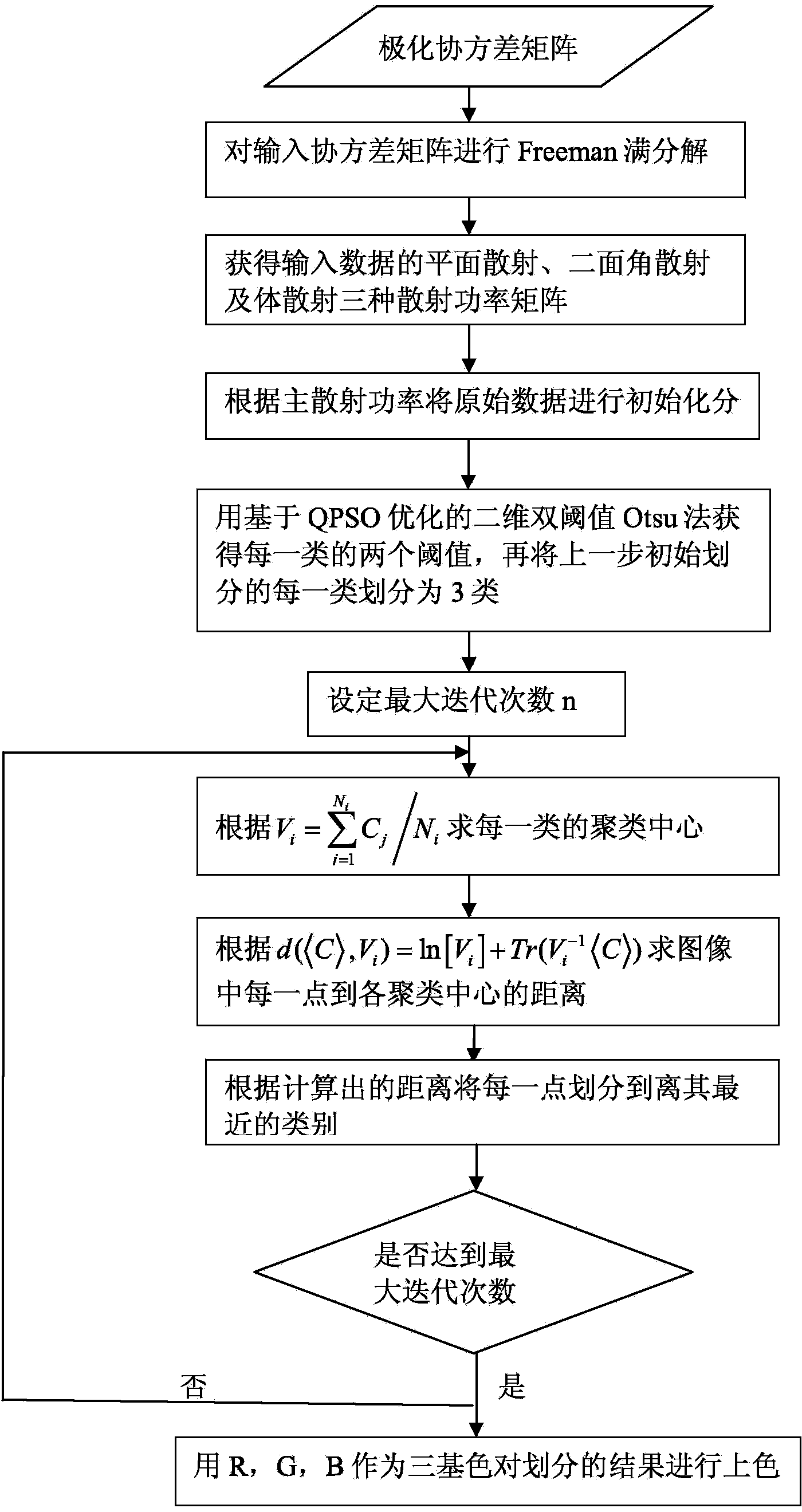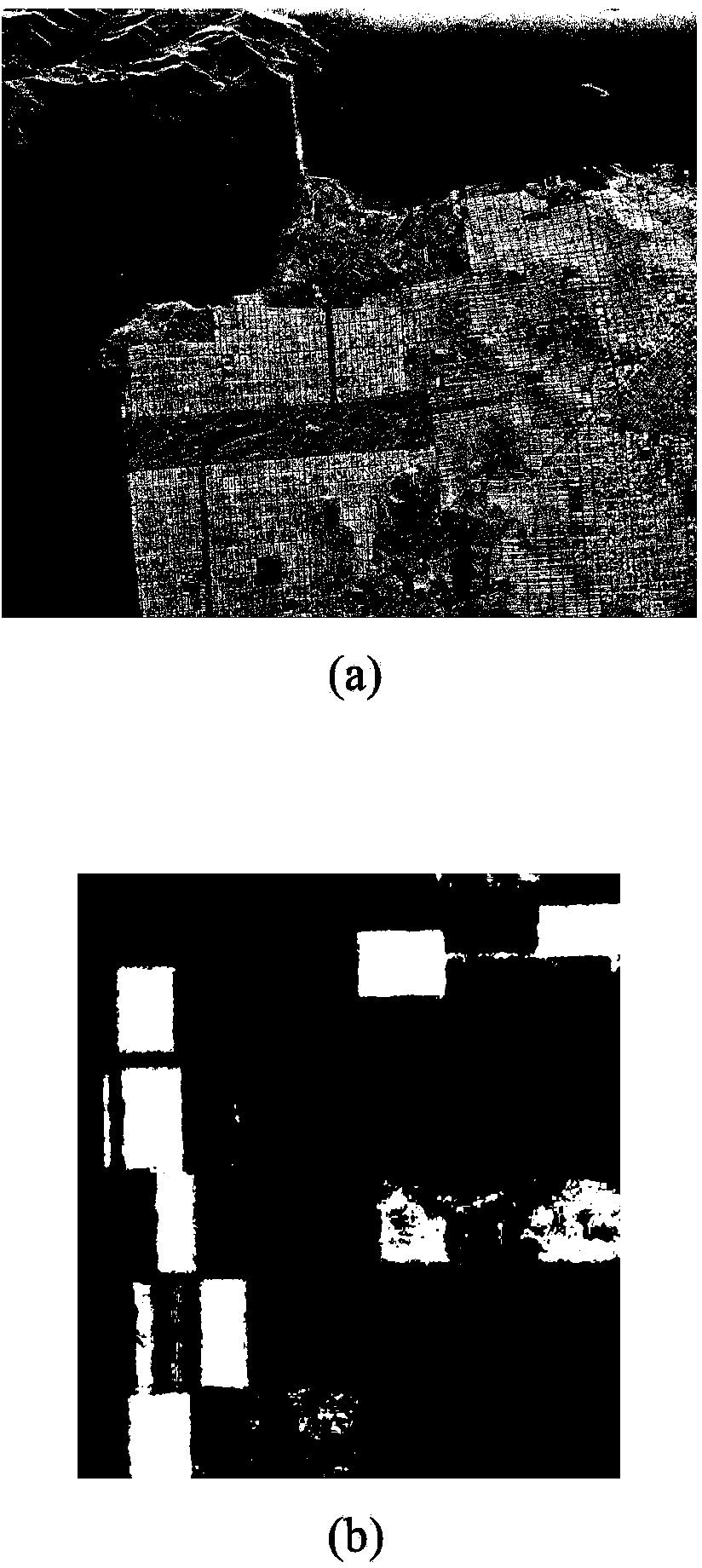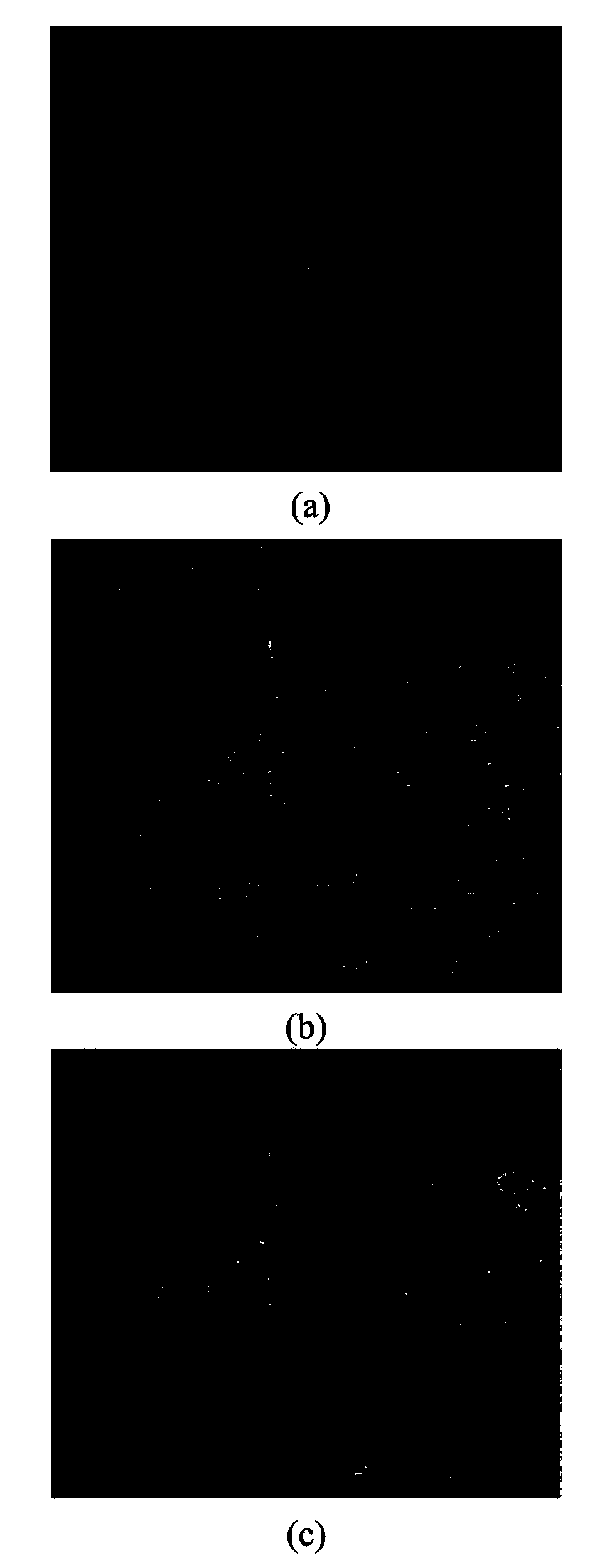Polarization SAR (synthetic aperture radar) image classification method based on Freeman decomposition and PSO (particle swarm optimization)
A technology of particle swarm optimization and classification methods, applied in character and pattern recognition, instruments, computer components, etc., can solve problems such as ineffective distinction, arbitrary division of regions, and poor performance of classifiers
- Summary
- Abstract
- Description
- Claims
- Application Information
AI Technical Summary
Problems solved by technology
Method used
Image
Examples
Embodiment Construction
[0025] refer to figure 1 , the specific implementation steps of the present invention are as follows:
[0026] Step 1: Perform Freeman decomposition on a polarimetric SAR image to obtain the scattered power matrix P s ,P d ,P v , where P s represents the surface scattering power matrix, P d Denotes the dihedral scattered power matrix, P v represents the volume-scattered power matrix.
[0027] Specific steps are as follows:
[0028] 1a) Each pixel of the polarimetric SAR image is a 3×3 polarization covariance matrix C containing 9 elements;
[0029] C = ⟨ | S HH | 2 ⟩ 2 ⟨ S HH ...
PUM
 Login to View More
Login to View More Abstract
Description
Claims
Application Information
 Login to View More
Login to View More - R&D
- Intellectual Property
- Life Sciences
- Materials
- Tech Scout
- Unparalleled Data Quality
- Higher Quality Content
- 60% Fewer Hallucinations
Browse by: Latest US Patents, China's latest patents, Technical Efficacy Thesaurus, Application Domain, Technology Topic, Popular Technical Reports.
© 2025 PatSnap. All rights reserved.Legal|Privacy policy|Modern Slavery Act Transparency Statement|Sitemap|About US| Contact US: help@patsnap.com



